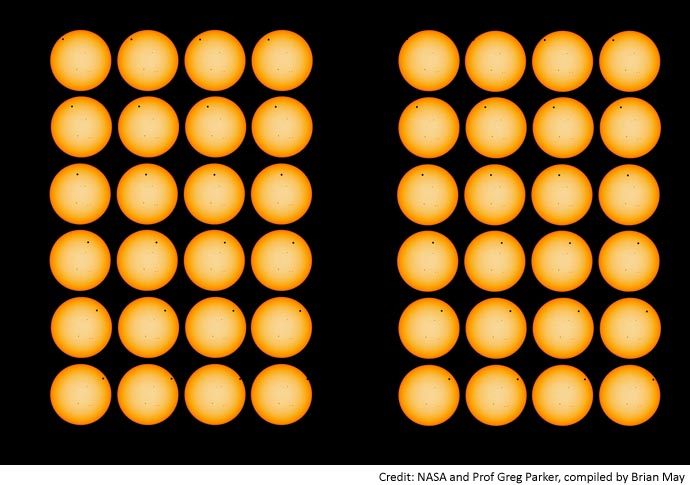OK ! Maybe it was NOT quite the last Transit stereo.
This one is amusing! IT tells the WHOLE story, but when you see it in stereo, it might remind you of a bunch of flies in bottles!
Cheers
Dr. Bri

POSTSCRIPT – comment from an expert on these images, Michael Davis – many thanks, Michael.
I also asked him what the significance of the colours in the solar images was.
Greetings again, Dr. Bri, from sunny San Antonio!
The colors carry no scientific significance. They are just chosen to represent the different UV colors, and they are “easy on the eyes.” A different research group producing images in that bandpass would choose different colours.
The 171 Angstrom emission on the Sun tracks iron, while 304 Angstroms matches ionized helium. Both emissions are produced in the corona rather than the photosphere, so they are used to track coronal activity and flares. In fact, if you compare them with the visible images, the dark sunspots in the visible match the brighter emission spots in the UV.
The fact that the dark Venus “spot” is present in all images tells us it is an occulting body, and not a solar property. While that conclusion may appear obvious for this occultation, it is not so obvious when using the same techniques to measure occultations in other stars. If there is a drop in brightness in all wavelengths, you have an occultation. If the brightness only drops in the visible region, you are seeing “starspots” instead of a planetary occultation.
Anyway, hope that helps, and congrats on the RSPCA invitation!
Mike Davis
Michael Davis
Senior Research Scientist
Space Science & Engineering Division
Southwest Research Institute